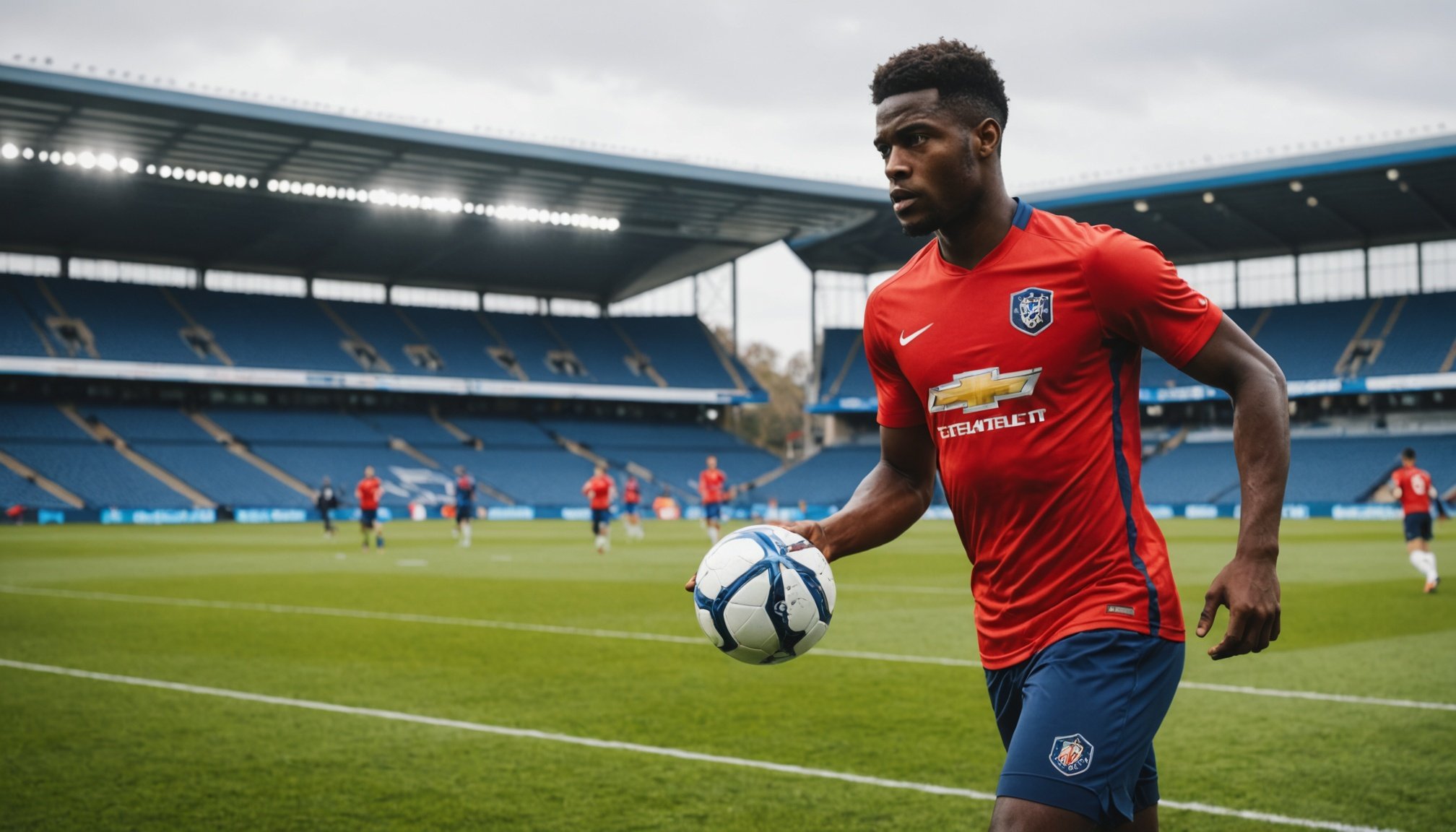Overview of Wearable Technology in Football
Wearable technology has revolutionised football by enhancing athlete monitoring and performance. These devices come in various forms, such as smartwatches, heart rate monitors, and GPS trackers, all designed to evaluate different aspects of a player’s health and game performance. Initially used for basic fitness tracking, wearables have evolved significantly, integrating more advanced features like biometrics and collision detection to monitor both health and gameplay.
Historically, integrating wearable technology into sports has seen a gradual yet impactful progression. From simple pedometers to sophisticated systems, its purpose has remained clear: improving football performance enhancement through precise data. As these technologies have developed, they’ve become indispensable tools for teams, offering unparalleled insights into a player’s condition and performance metrics.
Also to read : Enhancing fan engagement: cutting-edge social media tactics for football teams” off-season success
Monitoring player health and performance is vital in football, and wearables provide the means to achieve this efficiently. Modern devices track numerous health indicators, enabling coaches and medical teams to make informed decisions regarding training intensity and recovery times. This constant flow of information is instrumental in adapting strategies to maximise player output, maintaining a delicate balance between performance and player well-being. As technology continues to advance, its role in football will only grow, offering even greater opportunities for teams to excel.
Impact on Training Practices
Wearable technology has profoundly impacted football training, offering real-time feedback essential for adapting coaching strategies. Devices like GPS trackers and heart rate monitors provide immediate information on player movement, intensity, and exertion during training sessions. This dynamic feedback allows coaches to adjust drills and workloads, ensuring players train efficiently without risking overexertion.
This might interest you : Essential heart health management techniques for professional football athletes: key strategies for optimized monitoring and maintenance
Several case studies underline wearable technology’s role in elevating training outcomes. For instance, professional teams have reported improved player performance metrics by integrating these devices into their regimens. By analysing data, coaching strategies can be fine-tuned to enhance skills, speed, and endurance, leading to more refined and effective training sessions.
The marriage of wearable technology and data analytics is pivotal in modern training approaches. Teams use the collected data to develop personalised training plans that cater to individual player profiles. This targeted approach ensures that each player’s unique strengths and weaknesses are addressed, fostering holistic growth. The comprehensive data allows tracking progress over time, making it invaluable for setting benchmarks and assessing improvement.
Overall, wearables empower coaches with a precise and efficient way to ensure that player training is both optimised and adaptive, anchoring advancements in football performance.
Injury Prevention and Management
In the high-stakes world of football, injury prevention is crucial for maintaining athletes’ long-term health. Wearable devices have become key players in this arena, offering innovative solutions for athlete care. These technologies monitor an athlete’s biometrics, providing insights into physical strain and fatigue levels.
Sophisticated sensors in wearable devices detect variations in movement patterns, which can signal potential injury risks before they manifest. For instance, if data indicates unusual strain on a player’s muscles or uneven gait, interventions can be initiated proactively. This real-time feedback system ensures players are not pushed beyond their limits, reducing the likelihood of overuse injuries.
Additionally, the role of wearable technology extends to injury rehabilitation. Devices track progression during recovery, helping to tailor rehabilitation programs to individual needs. This personalised approach promotes efficient recovery, minimizing downtime and promoting a swift return to the field.
Several success stories have highlighted notable reductions in injury rates due to wearable technology. These devices have enabled teams to implement preventative strategies, significantly lowering injury occurrences and enhancing overall player longevity. By leveraging real-time data, football teams can create safer and more sustainable environments for their athletes.
Performance Metrics and Analysis
In the realm of football, performance metrics have become vital for detailed player evaluation. Wearable devices assess key metrics such as speed, acceleration, and heart rate—transforming data into actionable insights. This wealth of information allows coaches and analysts to dissect player performance meticulously.
By leveraging data analysis, teams can correlate collected metrics with on-field actions, offering tangible examples of player effectiveness. For instance, analytics can reveal a player’s stamina by examining heart rate variability during intense periods of play. Armed with this knowledge, coaches can adjust training and strategy to maximise each player’s strengths.
Wearable technology also provides a framework for player performance benchmarking, setting standards for what constitutes excellence. By comparing individual statistics against team or league averages, players and coaches identify areas for improvement. Additionally, this benchmarking aids in scouting and recruiting, ensuring teams maintain competitive rosters.
Utilising these metrics, football teams gain an unparalleled understanding of their athletes’ capabilities. Advanced analysis facilitated by wearables not only aids in refining individual skills but also bolsters team performance through strategic enhancements. In an ever-evolving sport, embracing such tech-driven insights becomes imperative for continued success.
Future Trends in Wearable Technology
Wearable technology’s future in football looks promising, marrying innovation in football with sophisticated performance tracking. As technology continues to evolve, several upcoming advancements in wearable tech promise to redefine athlete monitoring. From miniaturisation to improved sensor accuracy, these innovations offer greater insights into player performance and health.
Emerging technologies, like biometric tattoos and integrated smart fabrics, are expected to advance performance tracking. These futuristic wearables could seamlessly monitor vital statistics without obstructing player movement. The ability to collate and analyse comprehensive data on-the-fly will further enhance coaching strategies and player performance, providing an edge over competitors.
Industry shifts predict an increase in innovation in football, shifting focus from traditional methods to technologically advanced solutions. As these technologies become more affordable and accessible, their adoption across teams globally is anticipated to rise. Despite these exciting prospects, potential challenges such as data security and ethical considerations surrounding athlete privacy need addressing to ensure a smoother implementation.
Overall, the future of sports tech holds transformative potential, offering teams unprecedented tools to monitor, evaluate, and enhance player performance. By staying abreast of these trends, teams can maintain competitive advantages in the always-evolving landscape of football.











